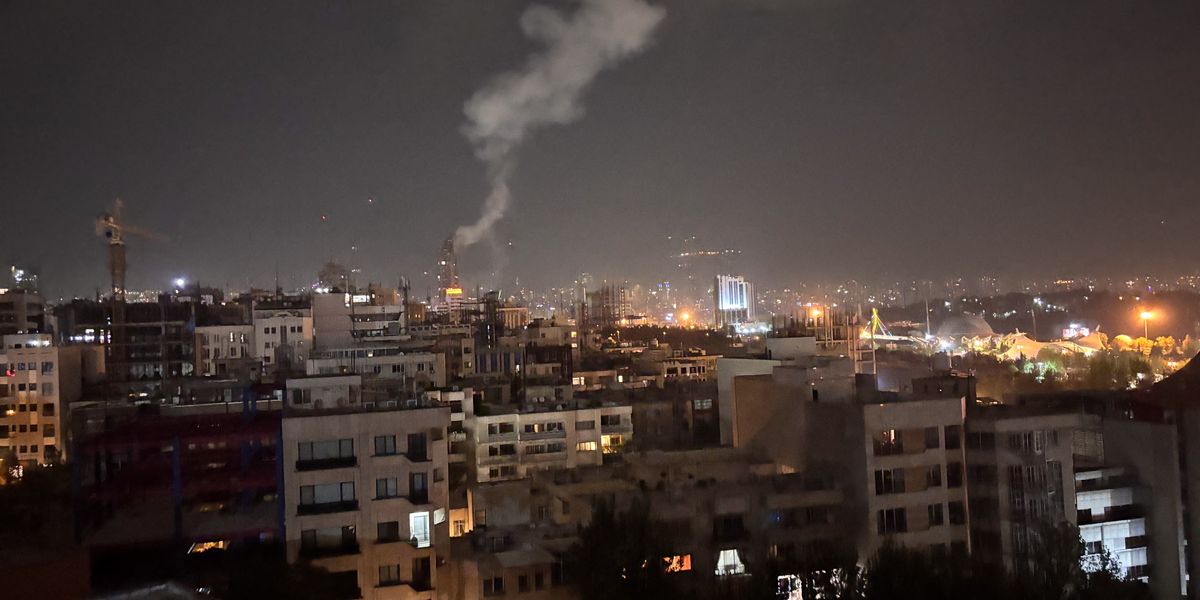The United States Department of Homeland Security (DHS) announced on Tuesday that it was scrapping a policy requiring people to take off their shoes while passing through airport screenings.
The policy, long a source of ire for travellers, had its roots in the aftermath of the September 11, 2001, attacks on the US, when authorities sought to bolster security around air travel through a host of measures.
Many more rules have been added in the time since, some criticised as arbitrary and needlessly intrusive, and have been supplemented by the integration of measures such as facial scanning technology at airports across the country.
What’s behind the change, what rules remain, and could other policies change next?
STARS, STRIPES, AND SHOES ON! 🇺🇸👟
Under the leadership of @Sec_Noem, DHS is announcing a new policy today which will allow passengers traveling through domestic airports to keep their shoes on through security screening at TSA checkpoints.
This policy change will drastically… pic.twitter.com/clyk46RXvI
— Homeland Security (@DHSgov) July 8, 2025
What was the ‘shoes off’ policy?
The “shoes off” policy was first implemented by the Transportation Security Administration (TSA) in 2006 and required travellers to remove their shoes as they advanced through airport security screenings to check them for possible explosives.
Those enrolled in TSA PreCheck, a programme in which people who pass a basic security check are allowed to bypass certain airport security measures, had already been allowed to pass through screenings with their shoes on.
Why was it implemented?
The policy was the result of a failed December 2001 attack by a British man named Richard Reid, who packed explosives into his shoes and tried to detonate them during a flight from Paris to Miami.
The incident, like many attempted attacks carried out in the post-9/11 period, was highly amateur: Reid, a petty criminal who became an Islamic fundamentalist, was foiled after an airline worker noticed that he was trying to light his shoe on fire with a match.
But the failed attack played into fears that were prominent during the post-9/11 era. And, when it came to safety, why take a chance?
“TSA can’t just rely on the next attack being as incompetent as this one was,” Jay Stanley, a privacy advocate and senior policy analyst at the American Civil Liberties Union (ACLU), told Al Jazeera.
The agency asked people, on a voluntary basis, to consider removing their shoes while passing through screening so they could be checked for explosives. TSA later made the policy mandatory in August 2006.
 An FBI agent, left, sits next to a suspect identified by authorities as Richard Reid, right, as he is transported in a car from State Police barracks at Logan International Airport in Boston on Saturday, December 22, 2001 [Elise Amendola/AP Photo]
An FBI agent, left, sits next to a suspect identified by authorities as Richard Reid, right, as he is transported in a car from State Police barracks at Logan International Airport in Boston on Saturday, December 22, 2001 [Elise Amendola/AP Photo]Why was the policy scrapped?
DHS Secretary Kristi Noem said in a statement on Tuesday that eliminating the policy would remove a source of strain on travellers and reduce TSA wait times at airports, and was no longer necessary due to technological innovations.
“We expect this change will drastically decrease passenger wait times at our TSA checkpoints, leading to a more pleasant and efficient passenger experience,” she said.
The change was effective immediately.
What other policies remain in place, and could they change?
While the “no shoes” policy is gone, travellers expecting an easy, stress-free trip to the airport should temper their expectations as many other security measures remain in place.
Passengers will, for example, still have to remove their belts, coats, laptops, and certain items from their bags while passing through security. Rules limiting gels and liquids in carry-on items to 3.4 ounces (100 ml) still apply, and checked bags must also be subjected to X-ray screenings.
Canines used for detecting bombs and drugs are still frequently used, and full-body scanners were brought to airports after another failed attack in December 2009, in which a man tried to detonate explosives smuggled onto a plane in his underwear.
Noem has suggested that DHS is reviewing some rules, but did not offer further details.
Are those measures effective or just security theatre?
Travellers have long fumed about an ever-growing list of measures that can seem arbitrary and do not always have a clear utility.
While the government argues that the increases in airport security reflect efforts to patch up vulnerabilities exposed by the 9/11 hijackers and subsequent failed attacks, some experts say that certain measures provide the impression of security more than provable benefits.
“People are hesitant to push back against new rules because nobody wants to be seen as responsible if there’s another attack,” said Stanley.
“Security theatre has always been a part of this, where you make a big show of security in order to give people the impression of greater safety.”
 A TSA security checkpoint in Pittsburgh International’s Landside terminal in Imperial, Pennsylvania, US on June 9, 2019 [Gene J Puskar/AP Photo]
A TSA security checkpoint in Pittsburgh International’s Landside terminal in Imperial, Pennsylvania, US on June 9, 2019 [Gene J Puskar/AP Photo]But enforcing so many rules can be difficult for agency workers themselves, who have the industrial-scale task of screening around two million travellers per day.
A 2015 report from the agency’s inspector general found that TSA officers had failed to detect weapons, explosives and other prohibited items brought through security by undercover agents to test the effectiveness of the system in 95 percent of cases.
Despite such concerns, TSA has continued to grow in size and scope each year. The agency has a workforce of nearly 63,000 people and a budget that is set to reach more than $11bn in 2025. In 2006, when “shoes off” was first implemented, it was around $6bn.
What new technologies are being used in airport security?
In her statement, Noem said that one of the reasons that the “shoes off” policy could be safely discarded is that “cutting-edge technological advancements” have rendered it unnecessary.
One that travellers may have noticed is the greater use of facial recognition technology, a development some privacy advocates have viewed with concern.
What are the privacy concerns?
Petra Molnar, a lawyer and author of the book, The Walls Have Eyes: Surviving Migration in the Age of Artificial Intelligence, told Al Jazeera that in an era of heightening restrictions on movement, airports have become testing grounds for new technologies, with civil liberties a largely secondary concern.
“With increasingly more digital technologies used at borders, airports have become epicentres of surveillance tech, with facial recognition and biometric technologies augmenting to physical surveillance practices,” said Molnar.
“Airports and borders are often one of the first places where new surveillance technologies are tested out, often with little regulation and oversight. Airports are the true testing grounds where unregulated technology experiments can run unchecked.”
While the decision to scrap the “shoes off” policy is a rare example of airport security measures being dialed back in the name of efficiency and convenience, it also comes at a time when those traveling or returning to the US are increasingly wary of being pulled aside and questioned about their political views on topics such as Israel’s war in Gaza.
The administration of President Donald Trump recently warned, for example, that international students entering the US must make their social media profiles available for inspection by authorities.
“The goal of security measures should be to ensure that nobody can get through this security process if they pose a threat,” said Staley. “The problems start when the government tries to categorise people by traits they believe could make them a risk, and to do that, you need to go into people’s lives and find out more about them.”

 4 hours ago
1
4 hours ago
1










 English (US) ·
English (US) ·